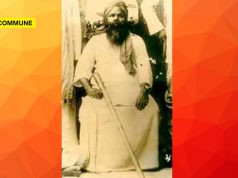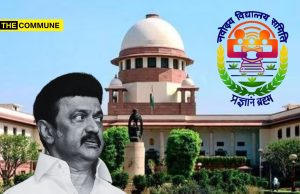
The land of Assam, on whose lovely lap the mighty Brahmaputra majestically flows, has given birth to many daring and dauntless warriors under Ahom dynasty. They had maintained their sovereignty with grit and gallantry, firmness and fortitude for almost six centuries [1228-1826] against the mighty, monstrous, mean, malicious Moghul marauders, thanks to their proud and patriotic, relentless and resolute kings. The awesome Ahoms fought and won against the Mughal empire seventeen times! In fact, they were the only dynasty not to fall to the Mughal Empire at all.
Advent of Lachit Borphukan
Lachit Borphukan was born on 24th November, 1622 to Momai Tamuli Borborua, the first Borborua (Governor of upper Assam and Commander-in-Chief of the Ahom army) under Prataap Singha. As was the tradition in Ahom society, the young Lachit was taught philosophy and arts besides military skills.
By dint of sheer hard work and dedication he was considered for appointment to the position of a Soladhara Barua (scarf-bearer) of the Ahom King. That position was the modern day equivalent of a principal secretary. Gradually Lachit was elevated to other important positions like Superintendent of the Stable of Royal Horses (Ghora Barua) and Superintendent of the Royal Household Guards to the Ahom king Chakradhwaj Singha.
Impressed by his prowess and pugnacity, the king promoted Lachit to be one of the Borphukhan. In the Ahom system of governance Borphukan was one of the five patra mantris (councillors) who possessed both executive and judicial powers.
The Scenario
At the time when our narration starts, Ahom king Chakradhwaj Singha was at the helm. The predatory Mughals were at the peak of their power and with an awesome and alarming army. They were menacingly moving and marauding many parts of India. When the most barbaric and brutal Aurangzeb ascended the throne at Delhi, he could not swallow the ignominy of defeat at the hands of a smaller force and therefore he repeatedly attacked the Ahom kingdom. Luckily for him, there was an interim internal discord among the Ahoms which he utilised and temporarily captured Gauhati. He wanted to go ahead and capture Saraighat on the other side of Brahmaputra. But alas, he made a fatal error and got the bitterest experience of his life there!
In August 1667, Lachit accompanied by Atan Burhagohain, undertook a downstream expedition on Brahmaputra, to retake Gauhati.
Making Kaliabor his base camp, Lachit reconquered Gauhati, occupied Rangamahal forts and through a midnight assault occupied Itakhuli. Firuz Khan, the faujdar of Gauhati was taken as prisoner, and with the help of river warfare, Lachit removed the Mughals from Umananda and Barhat. As a recognition for his victory, he was presented with the Hengdang, a gold plated sword by the king.
The Battle Of Saraighat
Aurangzeb, incensed at the successive defeats, sent a huge army under the command of Raja Ram Singh and Mirza Raja Jai Singh to retake Gauhati. By February 1669, Ram Singh reached Rangamati, accompanied by Rashid Khan. It was a massive army with 4000 troopers, 30,000 infantry men, 21 Rajput chiefs with their contingents, 18,000 cavalry, 2000 archers and 40 ships. In addition the forces of Koch Bihar too joined the ranks, making the Ahoms virtually a miniscule mosquito!
And alas! Once again in the history of our motherland the different sects of her sons were thirsting for the blood of their own brethren and falling a prey to the common foe, furthering the interests of the Islamic invader!
Since Lachit was an expert strategist in gorilla warfare wherein a small contingent can cleverly control and contain a large army, the king chose him as Commander in Chief.
Lachit was initially aghast at the brobdingnagian size of the foe vis-a-vis the lilliputian size of his own. He knew that on an open field his army had no chance to fight, let alone any attempt for victory. Therefore he ingeniously utilised the undulating hills and the Brahmaputra river in his military tactics to tackle the huge enemy. The Ahoms were allied with the Jaintias, Garos, Nagas, the Rani of Darrang.
The place that was chosen was Saraighat where the Brahmaputra was the narrowest point, hardly a width of one km, ideal for naval defence, which was their strong point, so that Ahom Navy could keep the Mughals in check. Lachit set up a series of mud embankments in Gauhati, and ensured that the Mughals would be forced to take the river route to the city. Lachit set up his headquarters at Andharu Bali, a sandbank in south bank of Brahmaputra between Kamakhya and Sukreshwar hills and monitored the war operations. The north bank was under Atan Burhagohain [another intrepid hero of the episode].
Artful and adroit in mountainous terrain gambit, Lachit manoeuvred the situation with craft, cunningness, courage and confidence, causing colossal casualty to the enemy who did not possess even an iota of such skills. Consequently, the Moghul army was literally decimated. Ram Singh, who was the head of Aurangeb army was very furious. He even tried to offer huge bribe to Lachit to abandon the territory. It did not work. Then he adopted a dirty, despicable deception.
A letter attached to an arrow was shot into the Ahom camp, mentioning that Lachit had been paid one lac to vacate Guwahati. When the letter reached the king, he initially got suspicious of Lachit. But, his minister convinced the king that it was a hoax and vouchsafed for Lachit’s loyalty. Still, the king sent a crazy order that Lachit should come out in the open and fight the enemy in plain terrain, a move which was definitely disadvantageous and dangerous to Lachit. To prove his loyalty, Lachit came out and continued the battle in the Allaboi plains. Initially Ahoms were successful and they even captured the local mughal commander. But, they had to face point blank the full force of the Mughal cavalry led by the fierce and ferocious Ram Singh.
At this crucial stage, Lachit had unfortunately fallen ill and his physician advised him strongly to take rest for awhile so that he could resume the battle after recovery. But, here was Lachit’s response:
“When my countrymen are suffering from invasion, and when my army is fighting and sacrificing its life, how can I think about resting my body due to a mere illness? How can I think about going home to my wife and children when my entire country is in trouble?”
Since he was physically not fit to stand and fight, Lachit changed his game plan so that he can somehow continue to lead the fight. He got seven boats ready, loaded them with bows and arrows. Stationing himself in the boat, he directed his army from the front. Inspired by and imbued with his indomitable spirit, his army fought with full resolve as a result of which the Mughals under Ram Singh suffered heavy casualties and retreated. Lachit won the war.
The Battle of Saraighat, fought on the banks of the Brahmaputra in Guwahati in 1671, is considered as one of the greatest naval battles on a river which resulted in the victory of Ahoms over the Mughals.
The intensity of his passion and patriotic spirit was unbelievable as indicated by the following incident. In the Saraighat war, he wanted an earthen wall and a bridge constructed overnight as a second defence and he assigned the task to his uncle. In the morning, when he saw that it was not done, he got furious and killed his own uncle instantly. He justified his action by asserting that his country is greater than his uncle!
After his defeat, the Moghul Commander-in-chief, Ram Singh wrote to Aurangzeb: “Every Assamese soldier is an expert in rowing boats, shooting arrows, digging trenches and in wielding guns and cannons. I have not seen such specimens of versatility in any other part of India. Glory to the King. Glory to the Commander. One single individual leads all the forces. Even I, Ram Singh, being personally on the spot, have not been able to find any loophole.” The Barphukan’s victory is recorded in a stone inscription in Guwahati.
Legacy
The renouned historian Sitaram Goel remarked that Lachit Borphukhan’s name should be taught in all Indian households like that of Shivaji and Banda Bahadur. 24th November, Lachit’s birthday is now being celebrated each year as Lachit Divas (Lachit Day) statewide in Assam where they commemorate the heroism of Lachit Borphukan.
Our Prime Minister Narendra Modi paid a rich tribute to the great Ahom general on his birth anniversary on Tuesday, November 24, 2021. Modi tweeted, “On his birth anniversary, I salute Lachit Borphukan. He is India’s pride and his valour during Saraighat war can never be forgotten.”
A refreshing fact is that following repeated demands, our present government has now included a chapter on him in the CBSE curriculum. It is high time that we go ahead and make necessary corrections in our history books so that blossoming brain of the beginner is bred with authentic, accurate narrations of our proud past. The aim should be that an elementary school student in the remotest village of Tamilnadu should know enough about Lachit Borphukan, Chhatrasal, Banda Bahadur, Tanaji Malusare, while his counterpart in the farthest village in Arunachal Pradesh should be aware of Marudu brothers, Velu Nachiar, Kittur Chennamma etc, so that one can emotionally empathise, ideologically identify with the other and [the tree of national integration can grow and flourish.] or the seed of national integration can sprout, swell, spread throughout the length and breadth of the nation.




